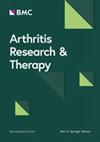Meta-analysis identifies the major impact of patient classification on the ACPA association with rheumatoid arthritis-associated interstitial lung disease (RA-ILD)
IF 4.6
2区 医学
Q1 Medicine
引用次数: 0
Abstract
We need screening for RA patients at high risk of RA-ILD to prevent the associated decrease in life quality and survival. The proposed screenings disagree regarding the anti-citrullinated protein antibodies (ACPA) because of their inconsistent association across recent studies. Therefore, we hypothesized that meta-analysis of the published reports should reveal clues explaining the heterogeneity of results, helping us progress in RA-ILD early detection. We aimed to discover the factors accounting for the variability of the ACPA association in the published reports. We searched the Web of Science and PubMed databases for studies reporting ACPA in RA-ILD and RA-control groups. The identified studies were analyzed using meta-analysis and meta-regression to identify moderators of the ACPA association. We found 513 unique records, containing 31 eligible data sets. The meta-analysis preceding the search for moderators showed a remarkable heterogeneity (pQ = 5.7 × 10–7). Appropriate tests showed that it was largely attributable (58.1%) to an outlier study, which had recruited cases and controls in different place and time contexts. The exclusion of this outlier from subsequent analyses did not completely remove heterogeneity (pQ = 0.004). However, it permitted the identification of the patient classification method as a significant moderator: The 14 studies using chest CT showed stronger ACPA association with RA-ILD (OR = 3.05 [95%CI: 2.12–4.38]) than the 16 employing multifactorial criteria (1.55 [95%CI: 1.18–2.03]; p = 0.0047 for the contrast). This moderator accounted for the significant heterogeneity (pQ = 0.079), was robust in sensitivity analyses, and was the only one found. Our results validate the ACPA association with RA-ILD, reinforce the importance of study design, and suggest the need to consider if studies relying on chest CT for classification could be more fruitful in the search for RA-ILD biomarkers.meta分析确定了患者分类对ACPA与类风湿关节炎相关性间质性肺疾病(RA-ILD)相关性的主要影响。
我们需要对RA- ild高风险的RA患者进行筛查,以防止相关的生活质量和生存率下降。拟议的筛选不一致的抗瓜氨酸蛋白抗体(ACPA),因为他们不一致的关联在最近的研究。因此,我们假设对已发表报告的荟萃分析应该揭示解释结果异质性的线索,帮助我们在RA-ILD早期检测方面取得进展。我们的目的是在已发表的报告中发现导致ACPA协会变异性的因素。我们检索了Web of Science和PubMed数据库中报告RA-ILD组和RA-control组ACPA的研究。采用荟萃分析和荟萃回归对已确定的研究进行分析,以确定ACPA关联的调节因子。我们找到了513条独特的记录,包含31个符合条件的数据集。在寻找调节因子之前的荟萃分析显示了显著的异质性(pQ = 5.7 × 10-7)。适当的测试表明,这在很大程度上可归因于(58.1%)一项离群研究,该研究招募了不同地点和时间背景下的病例和对照。从后续分析中排除这一异常值并没有完全消除异质性(pQ = 0.004)。然而,它允许将患者分类方法确定为一个重要的调节因素:14项使用胸部CT的研究显示ACPA与RA-ILD的相关性更强(OR = 3.05 [95%CI: 2.12-4.38]),而16项采用多因素标准的研究(OR = 1.55 [95%CI: 1.18-2.03]);P = 0.0047)。这个调节因子解释了显著的异质性(pQ = 0.079),在敏感性分析中是稳健的,并且是唯一发现的调节因子。我们的研究结果验证了ACPA与RA-ILD的关联,强调了研究设计的重要性,并建议需要考虑依赖胸部CT进行分类的研究在寻找RA-ILD生物标志物方面是否更有效。
本文章由计算机程序翻译,如有差异,请以英文原文为准。
求助全文
约1分钟内获得全文
求助全文
来源期刊

Arthritis Research & Therapy
RHEUMATOLOGY-
CiteScore
8.60
自引率
2.00%
发文量
261
审稿时长
14 weeks
期刊介绍:
Established in 1999, Arthritis Research and Therapy is an international, open access, peer-reviewed journal, publishing original articles in the area of musculoskeletal research and therapy as well as, reviews, commentaries and reports. A major focus of the journal is on the immunologic processes leading to inflammation, damage and repair as they relate to autoimmune rheumatic and musculoskeletal conditions, and which inform the translation of this knowledge into advances in clinical care. Original basic, translational and clinical research is considered for publication along with results of early and late phase therapeutic trials, especially as they pertain to the underpinning science that informs clinical observations in interventional studies.
 求助内容:
求助内容: 应助结果提醒方式:
应助结果提醒方式:


